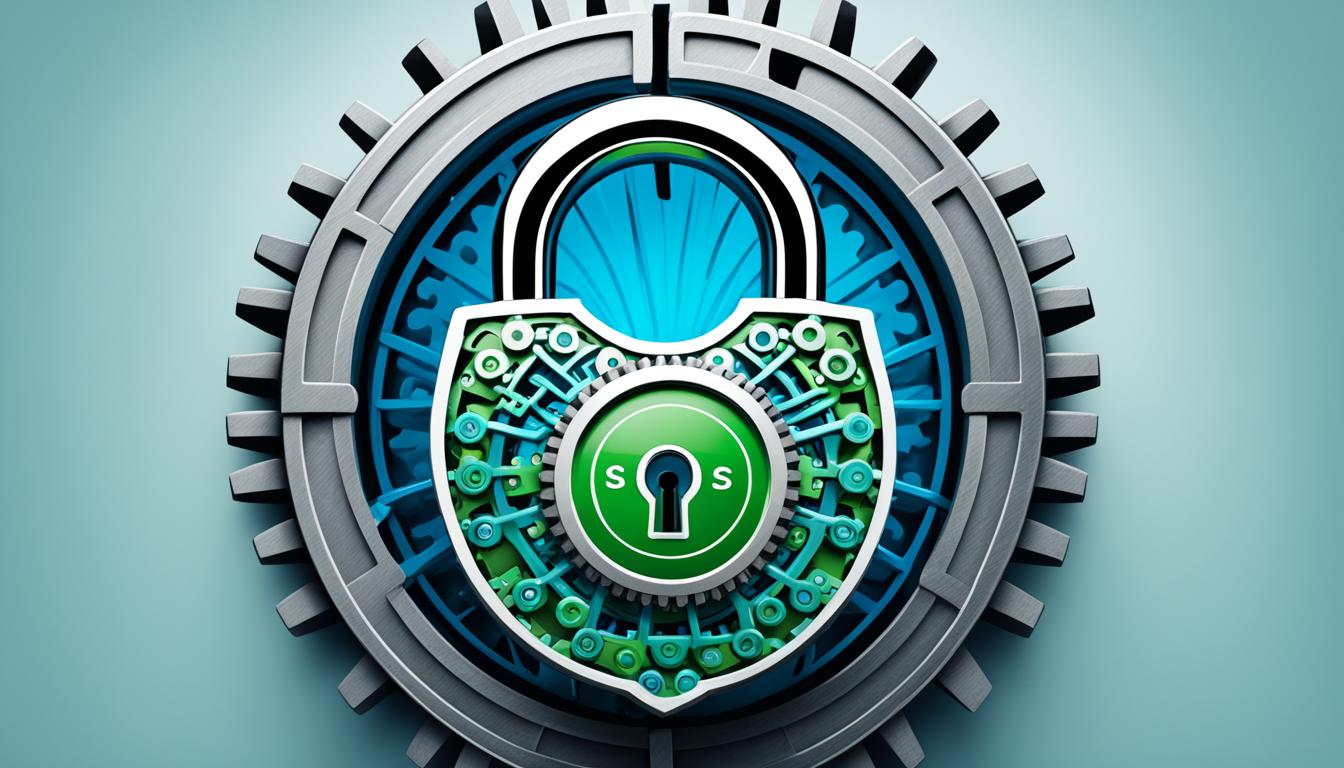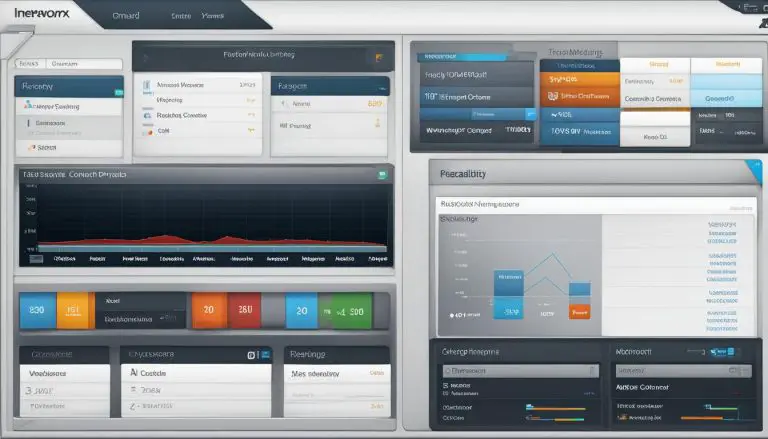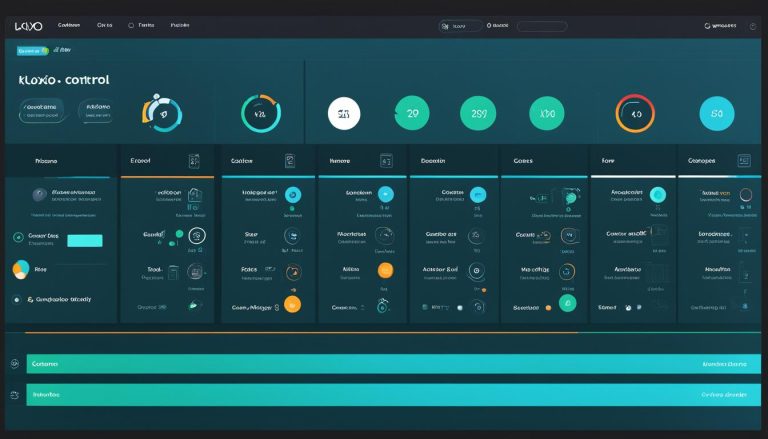Understanding What is SSL/TLS – Online Security Explained
As technology continues to advance, ensuring the security of online data has become more important than ever. One crucial aspect of online security is SSL/TLS certificates. You may have come across phrases like SSL, TLS, Secure Sockets Layer, or Transport Layer Security, but what exactly do they mean?
SSL, or Secure Sockets Layer, and its successor TLS, Transport Layer Security, are cryptographic protocols that provide a secure connection between a client (your device) and a server (a website). These protocols encrypt the data transmitted between the client and server, ensuring that it cannot be intercepted or tampered with by malicious actors.
The SSL/TLS protocol consists of several layers: the handshake, record, and alert layers. The handshake process involves the client and server exchanging necessary information to establish a secure connection. The record layer is responsible for encrypting and decrypting the data being transmitted. The alert layer handles any error or warning messages that may occur during the secure connection.
So, what is the difference between SSL and TLS? SSL was the original protocol developed by Netscape in the 1990s, and TLS is its successor, introduced to address vulnerabilities and improve security. TLS is now widely used, and the terms SSL and TLS are often used interchangeably in discussions about online security.
SSL/TLS encryption relies on SSL/TLS certificates to verify the identity of websites and enable secure connections. These certificates serve as digital passports that validate the authenticity and integrity of a website. They also enable the use of HTTPS (Hypertext Transfer Protocol Secure), which indicates a secure connection in the website’s URL.
There are different types of SSL/TLS certificates available, each offering different levels of validation, trust, and encryption. Additionally, SSL/TLS certificates can be categorized based on the domain types they support, such as single domain certificates, wildcard certificates, and multi-domain certificates.
Key Takeaways:
- SSL/TLS protocols provide secure connections between clients and servers, encrypting data to prevent unauthorized access.
- The SSL protocol was developed in the 1990s, and TLS is its successor.
- SSL/TLS certificates are digital passports that verify the identity of websites and enable secure connections.
- SSL/TLS certificates come in different types, offering varying levels of validation, trust, and encryption.
- Different domain types, such as single domain, wildcard, and multi-domain, are supported by SSL/TLS certificates.
Types of SSL/TLS Certificates
When it comes to securing your website and ensuring the safety of your visitors’ data, SSL/TLS certificates are a crucial component. These certificates not only encrypt the data transmitted between the client and the server but also provide validation and trust. In this section, we will explore the different types of SSL/TLS certificates available in the market and their specific use cases.
Extended Validation (EV) Certificates
Extended Validation certificates, often abbreviated as EV SSL/TLS certificates, offer the highest level of security, validation, and trust. To obtain an EV certificate, organizations must pass rigorous checks conducted by Certificate Authorities (CAs). These checks include verifying the organization’s legal and physical existence, as well as the ownership of the domain name.
EV certificates are commonly used by businesses that handle sensitive data such as financial transactions or personal information. The presence of an EV certificate is indicated by a green address bar in most web browsers, providing a visible sign of trust to website visitors.
Organization Validation (OV) Certificates
Organization Validation certificates, also known as OV SSL/TLS certificates, offer a moderate level of validation and trust. While still requiring verification of domain ownership, the checks for OV certificates are less stringent compared to EV certificates.
OV certificates are widely used by commercial businesses to build trust with their customers. These certificates display the organization’s name in the certificate details, providing visitors with visible assurance that the website is legitimate and trusted.
Domain Validation (DV) Certificates
Domain Validation certificates, or DV SSL/TLS certificates, are the simplest and most affordable option for securing a website. These certificates require minimal validation, usually involving only confirming domain ownership.
DV certificates are suitable for informational websites such as blogs or personal portfolios. While they provide encryption for the transmitted data, they do not display any organization details in the certificate, offering a basic level of trust.
Now that we have explored the different types of SSL/TLS certificates based on validation and trust levels, let’s move on to discussing the various types of SSL/TLS certificate domains.
Different Types of SSL/TLS Certificate Domains
When it comes to securing websites with SSL/TLS certificates, there are different options depending on the domain requirements. Let’s take a closer look at the three main types of SSL/TLS certificates for different domain scenarios:
1. Single Domain SSL/TLS Certificates
A single domain SSL/TLS certificate is designed to protect a single domain or subdomain. It encrypts the communication between the website and its visitors, ensuring that sensitive data remains secure.
For example, let’s say I have a website called “mywebsite.com.” A single domain SSL/TLS certificate would secure “mywebsite.com” as well as any subdomains like “login.mywebsite.com” or “shop.mywebsite.com.” However, it cannot be used to secure multiple domains simultaneously.
2. Wildcard SSL/TLS Certificates
On the other hand, a wildcard SSL/TLS certificate offers broader coverage by securing a domain and all of its subdomains. With a wildcard certificate, you can protect multiple subdomains under a single certificate.
Continuing with the previous example, a wildcard SSL/TLS certificate for “mywebsite.com” would also secure subdomains like “login.mywebsite.com,” “shop.mywebsite.com,” and any other subdomains you have created.
3. Multi-Domain SSL/TLS Certificates
For organizations with multiple domains or websites, a multi-domain SSL/TLS certificate, also known as Unified Communications certificates, is the ideal choice. These certificates provide protection for multiple domain names hosted on the same or different servers.
Let’s say I have a company that owns “company.com,” “enterprise.com,” and “business.com.” With a multi-domain SSL/TLS certificate, I can secure all three domains under a single certificate, making it convenient and cost-effective.
By offering different levels of domain coverage, single domain SSL/TLS certificates, wildcard SSL/TLS certificates, and multi-domain SSL/TLS certificates provide flexible options for securing websites and ensuring data privacy.
https://www.youtube.com/watch?v=67Kfsmy_frM
| Types of SSL/TLS Certificates | Domain Coverage |
|---|---|
| Single Domain SSL/TLS Certificates | Single domain or subdomain |
| Wildcard SSL/TLS Certificates | Domain and all subdomains |
| Multi-Domain SSL/TLS Certificates | Multiple domain names |
With a solid understanding of the different types of SSL/TLS certificate domains, you can choose the appropriate certificate to suit your website’s needs and protect sensitive information.
SSL/TLS Encryption and Handshake Process
SSL/TLS encryption plays a vital role in ensuring secure communication between clients and servers. The encryption process involves the use of two types of encryption keys: asymmetric keys and symmetric session keys.
Asymmetric encryption, also known as public-key encryption, is a key pair consisting of a public key and a private key. The public key is widely shared through SSL/TLS certificates, while the private key remains securely stored on the server. This encryption method establishes a secure and confidential session between the client and server, ensuring that any data transmitted remains protected.
Symmetric encryption, on the other hand, uses a single shared key to encrypt and decrypt data. During an SSL/TLS session, a unique symmetric session key is generated for each connection. This disposable key is used to encrypt the transmitted data, providing a faster and more efficient encryption process.
The SSL/TLS handshake process is the initial phase of establishing a secure connection between the client and server. It involves a series of steps where the client and server exchange important information before the encrypted session begins. The handshake process includes:
- Client Hello: The client initiates the handshake process by sending a Client Hello message to the server. This message contains the cryptographic parameters and supported SSL/TLS versions.
- Server Hello: Upon receiving the Client Hello message, the server responds with a Server Hello message. This message includes the chosen SSL/TLS version, a random value called the Server Hello Random, and the server’s SSL/TLS certificate.
- Certificate Verification: The client verifies the validity and authenticity of the server’s SSL/TLS certificate by checking its digital signature and the certificate issuer’s chain of trust.
- Exchange of Session Keys: The client generates a pre-master secret, encrypts it with the server’s public key, and sends it to the server. Both the client and server then derive a symmetric session key from the pre-master secret, which will be used for encrypting the subsequent data.
- Session Established: If the certificate is valid, the session keys match, and all security parameters are agreed upon, the SSL/TLS handshake is deemed successful, and a secure session is established between the client and server.

Understanding the SSL/TLS encryption and handshake process is essential for ensuring secure online communication. By combining the strength of asymmetric encryption for secure key exchange and symmetric encryption for efficient data transmission, SSL/TLS establishes a robust encryption mechanism that protects sensitive information.
The next section will delve into the different types of SSL/TLS certificate domains, explaining how they provide security for various website architectures and structures.
Conclusion
In today’s digital age, online security is of paramount importance. SSL/TLS and HTTPS are the backbone of secure connections, ensuring that sensitive data remains protected during transmission. By authenticating websites and enabling encrypted data transfer, SSL/TLS certificates play a pivotal role in safeguarding online information.
SSL/TLS certificates come in various types, catering to different levels of validation and trust. Whether it’s the rigorous checks required for Extended Validation (EV) certificates, the intermediate validation offered by Organization Validation (OV) certificates, or the simplicity of Domain Validation (DV) certificates, there is a certificate for every need.
Encryption is the cornerstone of SSL/TLS, utilizing both asymmetric and symmetric keys. The asymmetric keys establish a secure session between clients and servers, while symmetric session keys encrypt and decrypt the transmitted data. This comprehensive encryption process ensures that even if intercepted, the data remains indecipherable to malicious actors.
To enable HTTPS on a website, it is vital to obtain an SSL/TLS certificate from a trusted certificate authority. By doing so, website owners provide assurance to users that their information is being transmitted securely. Understanding the basics of SSL/TLS and certificate authentication is crucial for both individuals and businesses to ensure safe online browsing and transactions.
FAQ
What is SSL/TLS?
SSL/TLS stands for Secure Sockets Layer/Transport Layer Security. It is a protocol that provides secure communication over the internet by encrypting data transmitted between clients and servers.
What is the difference between SSL and TLS?
SSL (Secure Sockets Layer) and TLS (Transport Layer Security) are both cryptographic protocols that provide secure communication. TLS is the successor to SSL and is considered more secure. However, the terms “SSL” and “TLS” are often used interchangeably to refer to the same technology.
What is SSL/TLS encryption?
SSL/TLS encryption involves the use of cryptographic keys to secure data transmission. It utilizes both asymmetric and symmetric encryption to establish an encrypted channel between a client and a server, protecting sensitive information from unauthorized access.
What are SSL/TLS certificates?
SSL/TLS certificates are digital certificates that authenticate the identity of a website and enable encrypted data transfer. They validate the ownership of a domain and establish trust between clients and servers during secure connections.
What are the different types of SSL/TLS certificates?
There are three main types of SSL/TLS certificates based on validation and domain: Extended Validation (EV) certificates, Organization Validation (OV) certificates, and Domain Validation (DV) certificates. Each type offers different levels of validation, trust, and encryption.
What is the difference between EV, OV, and DV certificates?
EV (Extended Validation) certificates provide the highest level of encryption, validation, and trust. OV (Organization Validation) certificates offer intermediate validation and trust. DV (Domain Validation) certificates are the simplest and least expensive option, suitable for informational websites.
What are single domain SSL/TLS certificates?
Single domain SSL/TLS certificates protect a single domain or subdomain. They cannot be used for multiple domains simultaneously.
What are wildcard SSL/TLS certificates?
Wildcard SSL/TLS certificates secure a domain and all of its subdomains. A single wildcard certificate can be used to protect multiple subdomains of a domain.
What are multi-domain SSL/TLS certificates?
Multi-domain SSL/TLS certificates, also known as Unified Communications certificates, provide protection for multiple domain names hosted on the same or different servers. They are suitable for organizations with multiple domains or websites.
How does SSL/TLS encryption work during the handshake process?
SSL/TLS encryption involves two types of encryption keys: asymmetric keys and symmetric session keys. During the handshake process, the client and server exchange necessary information to establish an encrypted channel. Asymmetric encryption is used to exchange symmetric session keys, which are then used to encrypt and decrypt transmitted data.
- About the Author
- Latest Posts
Janina is a technical editor at Text-Center.com and loves to write about computer technology and latest trends in information technology. She also works for Biteno.com.






